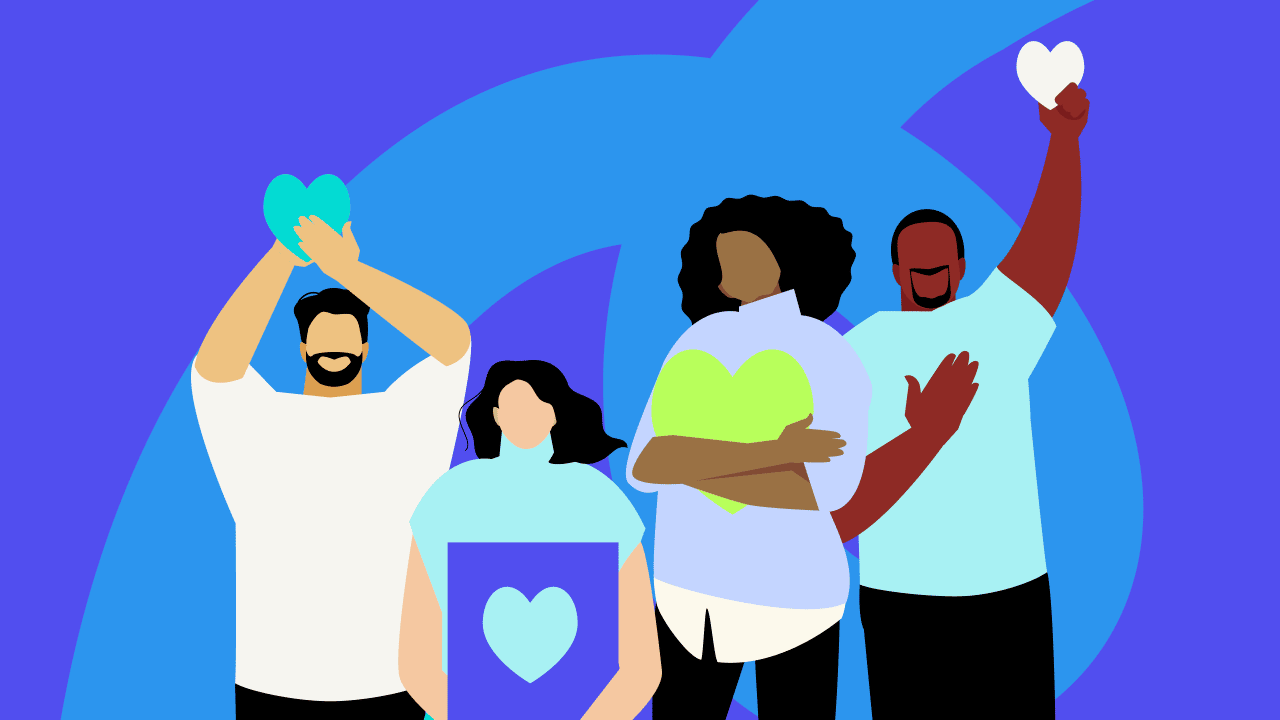Table of Contents
Diversity in the workplace is about more than being socially equitable. The key to building effective teams, a thriving work environment, and even a better bottom line, is building a diverse workplace, and truly appreciating their differences.
We’ll take a look at three major areas where- when authentically nurtured-will turn a surviving company culture into a thriving one: diversity of background, diversity of skill and working style, and diversity of opinion.
Diversity of background in the workplace
First, let’s take a second to get on the same page. When we talk about background diversity, this can include (but is not limited to) racial diversity, cultural diversity, ethnic diversity, or differences in demographics, gender, age, physical ability, religion, socioeconomic status, and sexual orientation.
When two or more co-workers have vastly different life experiences, there’s likely to be some kind of unconscious bias. However, research shows that fostering appreciation of those differences enables us to minimize conflict, amplify creativity, broaden our talent pools, and grow as individuals.
Here’s how: First, appreciating different backgrounds creates psychological safety, which is foundational to employee experience and employee engagement. The success of diverse teams depends on each and every person feeling safe voicing their wins, losses, and unique ideas.
For example, a college intern should feel just as safe sharing an opinion as a senior leader. Likewise, an older employee should feel safe contributing to a conversation even if most of their colleagues are a generation younger. Recognizing the inherent value of diverse talent, no matter their age or rank, makes everyone feel like a respected member of an inclusive workplace. And this ultimately results in much higher levels of employee retention, productivity and innovation.
Changing behavior is challenging. But we all have the ability to become more aware of our biases, and develop skills to combat them. Bias is easy, but change is necessary- and hard. That’s why the top two methods for diversity workforce training include: 1) walking in someone else’s shoes, and 2) goal setting.
One actionable example of showing appreciation to build a more inclusive environment is assigning employees to “swap shoes” with a person of a different background for a day. Encourage each individual to reflect on their experience, how it felt, any biases they faced, and any goals they’d recommend the company adopt to combat those biases. Then, provide a forum for employees to share what they’ve learned with their colleagues.
Diversity of skill and working style
When you have employees who span the whole range-from seasoned to new; from cautious to bold; from measured to highly innovative- you get skill and working style diversity.
Appreciating career level differences is important for many reasons. First, it improves business continuity as people join and leave your organization. Employee turnover is inevitable. As people move away from your organization, it’s important to have others who are skilled enough to coach those at a lower skill level. At the same time, as people become more and more skilled in a specific area, unconscious competence sets in.
Because the skill may feel like second nature, these individuals may not be as open to fresh ideas and patterns as someone who’s in the learning stage of a new skill. To continually build skill diversity, try placing colleagues in “reverse mentorship” pairs, where there’s mutual swapping of ideas and new information about shared skill sets.
Working styles come into play as individual personalities shine through. Different styles are most often evident in conflict resolution, but also show up as differing levels of introversion and extroversion, different approaches to problem-solving or decision-making, or different levels of attention to detail.
For example, a team member with a gentle, agreeable personality may have trouble communicating with one who is bold, direct and demanding. These individuals can certainly thrive together; but only by appreciating each other’s innate differences, and learning to respect them. To build appreciation for different styles, try offering a fun personality quiz to your team, and encouraging each member to share their results.
Finally, even employees with similar skill levels in a diverse workplace may have differing career goals. As business author Kim Scott puts it, each workplace is made up of “rock stars and superstars.” Rock stars are high performers who are content with their current skill level, and who may make valuable contributions in the same role for decades. They consistently do their job to the best of their ability, but are not necessarily looking to advance beyond their current position. Superstars, on the other hand, are ambitious when it comes to actively seeking career growth and development. These individuals regularly keep their current positions in the rear view mirror, while they focus on what’s ahead.
So, which is the “better” level of skill or style? The answer is most employees will ebb and flow between different skills and styles depending on their stage in the employee journey. What’s most important is remembering that all people are motivated by feeling respected, appreciated, and supported in their roles.
Diversity of opinion in the workplace
It’s a simple truth: Different people simply see the world in different ways. In a work setting (even a virtual one), it’s inevitable that political conversations, or other divisive topics, will arise between diverse employees from time to time. As a leader, it’s critical to manage the potential clash of unique perspectives to avoid any employee feeling undervalued or unappreciated for the valuable diversity they may add to an organization.
Here are three helpful tips when differences of opinion arise:
1) Find common ground
2) Remain objective
3) Don’t take it personally
When disagreements arise, even if two or more employees’ diverse backgrounds stem from being brought up in different cultures, it’s likely that some similar values make up each of their beliefs.
Remain objective by encouraging each party to listen to each other, to seek to understand, and appreciate the opposing view as different, yet valid. Finally, warn team members against becoming defensive when differing opinions collide. With these tips in mind, participants leave their disagreement feeling aligned and inspired.
To reap more of the benefits of diversity in the workplace, check out our 15 tips for building an inclusive workplace.



